Love didn’t grow very well
Robots. The West Wing/Star Wars. Toxic! The Filth. Oscar Wilde's ghost. Pricks. The Red Dress Project. Unicorns. Peter Watkins.
ITEM
Like A Steel Trap
We talked about the horrors of digitising the human mind. Butlerian nightmares. Consider the digital brain that aspires to humanity. Often presented in fiction as a guileless, childlike state. The yearning of Star Trek’s Data, or Asimov’s Bicentennial Man. Humanity demonstrates its virtue in acceptance of the humanoid aspiration. I have memories of a Behind The Scenes of Deep Space Nine, where production designer Howard Zimmerman explained that the aliens should always have something recognisably human about them. Said as the eyes of potato headed barfly, Morn, were lovingly retouched.
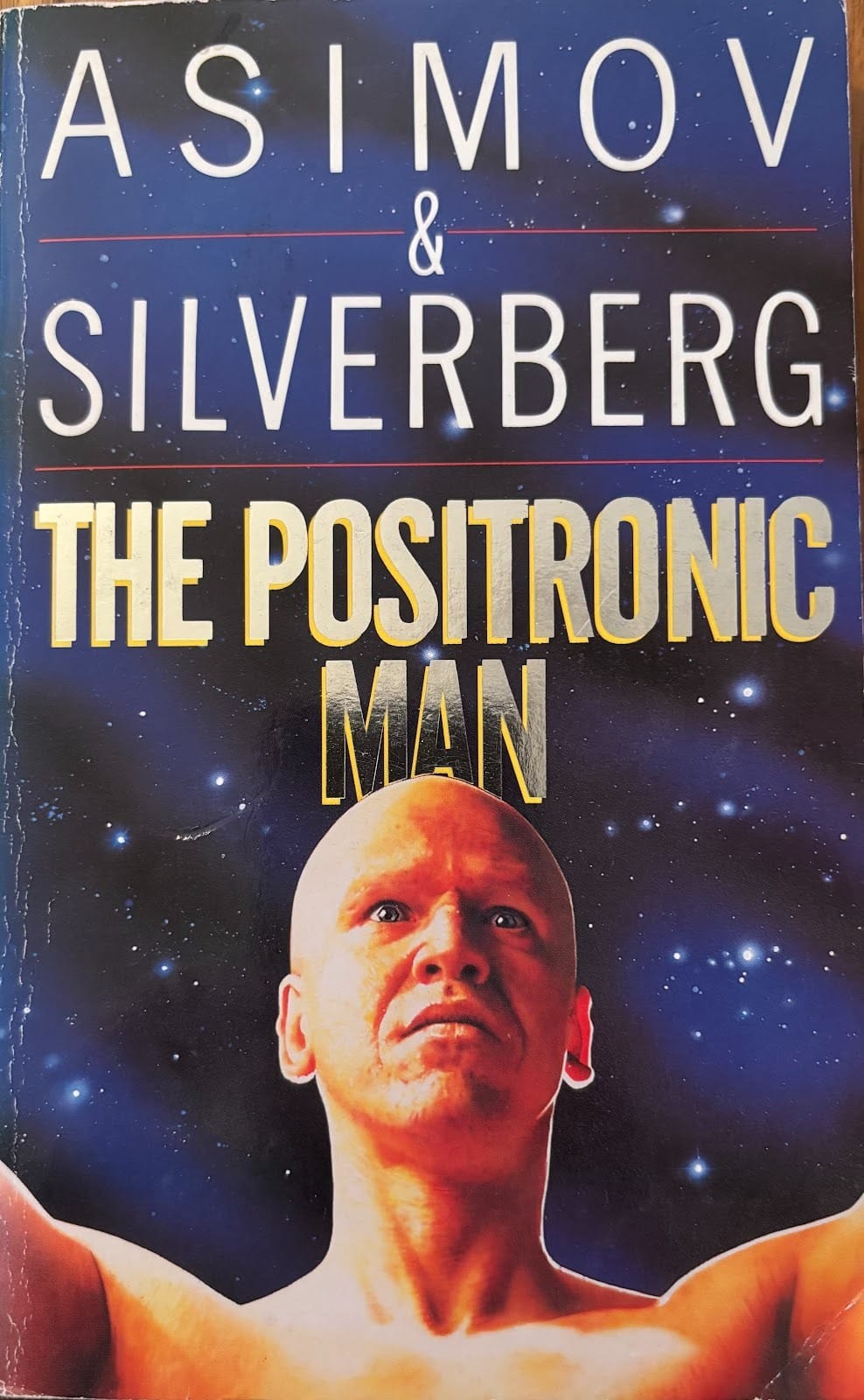
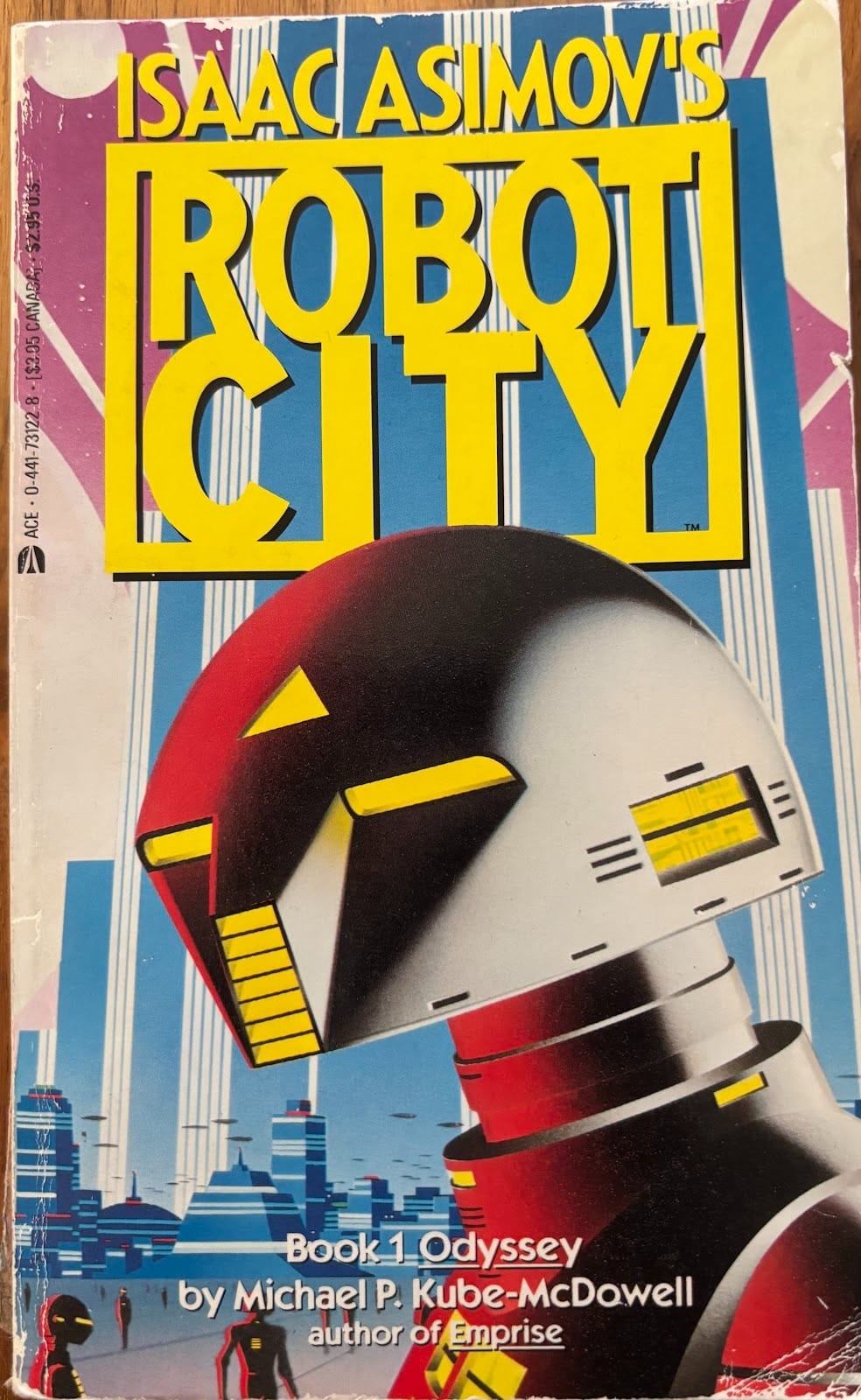
So, Data comes from Asimov. Though the famous Three Laws are not so much philosophical musing as they are a structure for creating locked room mysteries. In the introduction for one of his Robot City books, Asimov insists that his robots were never intended as allegory, so there.

Asimov owed something to Earl and Otto Binder’s Adam Link. A convivial machine, part misunderstood Frankenstein’s Monster, part superhero.
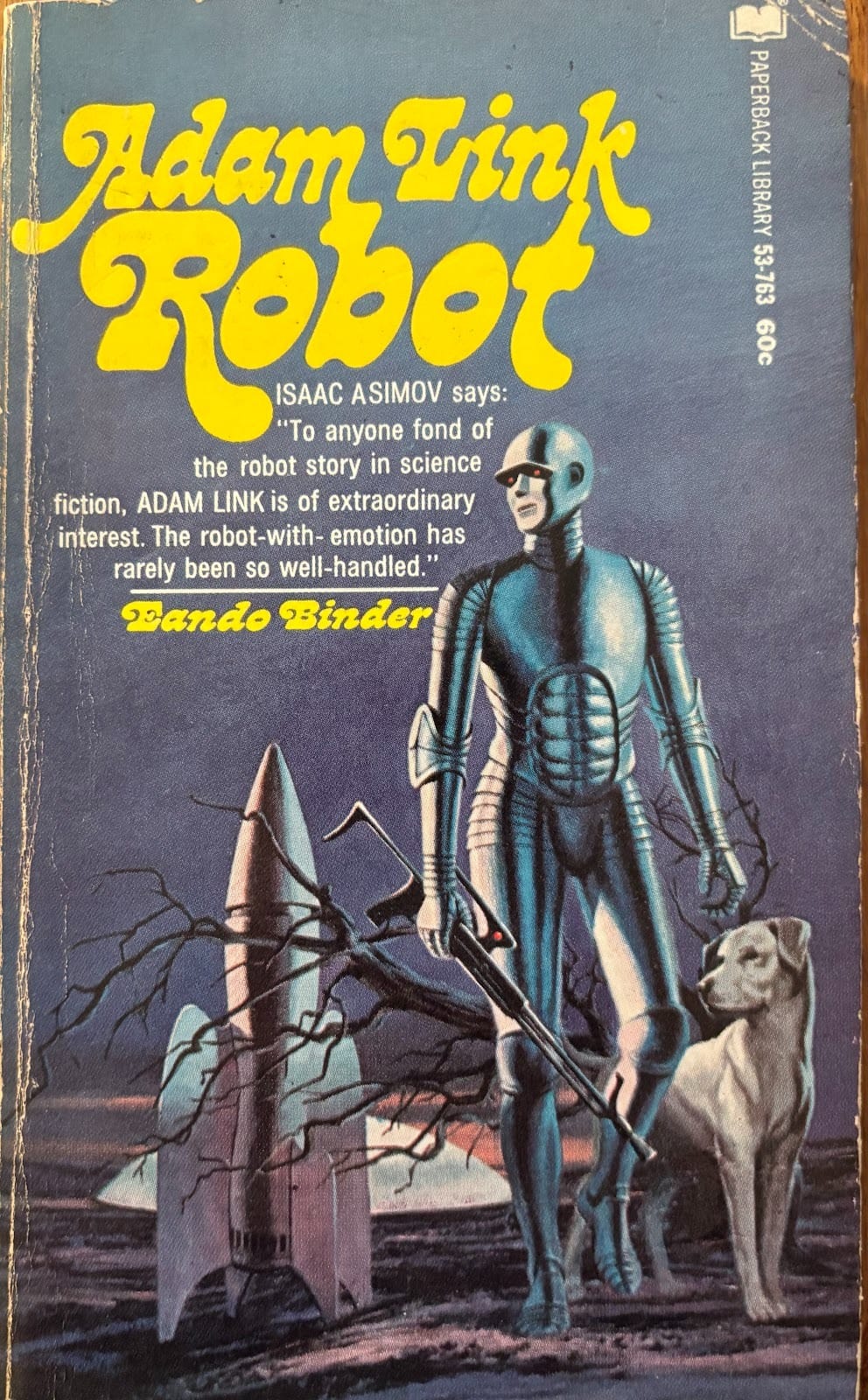
A machine determined to prove himself worth of being an upstanding American Citizen. Adam describes his brain as a ‘psuedo-brain’. His initial upbringing being like that of a human child.

Asimov’s mechanical men had positronic brains. Neither imagined anything of computer programming, rather a human brain cast in platinum-iridium. A kind of alchemy. Which, it seems to me, fit with the protoplasmic stamping hinted in R.U.R. or Rossum’s Universal Robots. A dreary tale, where man’s idleness in the face of an inexhaustible work force basically loses them the favour of God, allowing the robot to inherit the Earth.
Brains, artificial humanoid brains, then, are alchemical artifacts. Or, perhaps haunted objects. Spooked by the ghost of Mary Shelley. Burning memories, yet not to fade.
ITEM
A SUNRISE I WILL NEVER SEE (The West Wing 1996-2006, and Star Wars Prequels 1999-???)

Season one of the West Wing is surprisingly cute, a 90s quasi-sitcom about how in Washington DC, System Changes You From The Inside. The big vibe shift happened around September 2001 when the show became a place for establishment liberals to escape the Age of Stupidity (first draft) and imagine impossible dreams like "an Al Gore led War on Terror."
When Dubya was re-elected, a panicked second thought hit the ivory towers - these old white men gotta go! Ivy League wonks like Josiah Bartlet and John Kerry were a 90s relic, a new America needed a New Hope - non-ideological, non-threatening, and preferably non-white.
What they needed was Jimmy Smits, fresh off the non-sets of the Star Wars prequels where he adopted the infant hope of a republic on the brink of fascistic takeover. In the West Wing he was to be Matt Santos - tall, hunky, hispanic, a presidential candidate for America’s post-racial era. It was 2005. Still a place of exile for the liberal imagination, this time The West Wing had a jump on reality.
The catch: Santos was to lose in the General to a centrist Republican. This was what real victory looked like, the potential of a non-white President lurching the GOP away from the religious right. That the script changed last minute to have Santos win, a response to the untimely death of a cast member, is less important than the original plan. Hollywood was anxious about its prognosticative power. Jimmy was to watch history unfold from the dugout.
Twenty years later, in the Age_of_Stupidity_FINAL_NoRevisions, and Jimmy gets a call. The Star Wars content mill needs some grist, but this time it'll be different. This time he'll reject the Coruscant beltway consensus, march down the antiseptic corridors of the Imperial Core, and out the front gate, exchanging blue-milk lattes for Hashtag Rebellion.
All Jimmy needs is to check his calendar. No, that week doesn't work for him. Not that one either. Nope. Nah. Nothing…
Ah well.
Does anyone have Benjamin Bratt’s phone number?
ITEM
A Brief History of British Comics
8: Toxic!
- Publisher: Apocalypse Ltd
- March 28 - October 24, 1991
- 31 issues
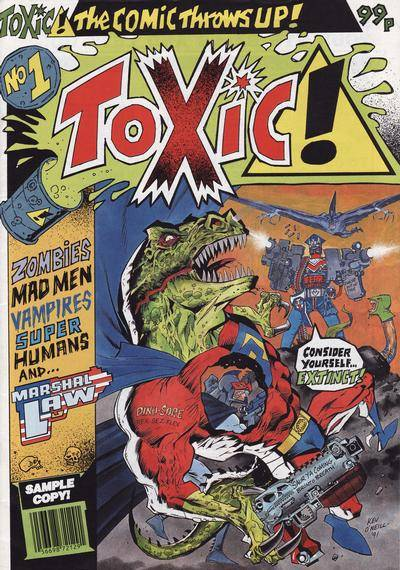
Oh no! Dad’s been on the premium lager and is dancing!
Toxic! arrived at the birth of the 1990s in a pile of dayglo vomit, a supposed rude riposte to the apparent trendification of 2000AD, and British comics in general. Its tagline ‘The Comic Throws Up’ was a direct repudiation of Marvel UK’s Strip’s ‘The Comic Grows Up’. Under the steer of stalwarts Pat Mills, John Wagner and Alan Grant, it was an almost heroically uncool endeavour that smacked of a 4-colour mid-life crisis.
Its splattery crassness and Kev O’Neill helmed design aesthetic seemed woefully outdated to teenagers pulled towards the zeitgeist flair of Deadline, or the thrillingly contemporary work of Steve Cook and Rian Hughes for Fleetway. Still, it was hard not to be lured by a new comic featuring art by O’Neill, McMahon, Bisley and others. Plus the opportunity to join at ground zero.
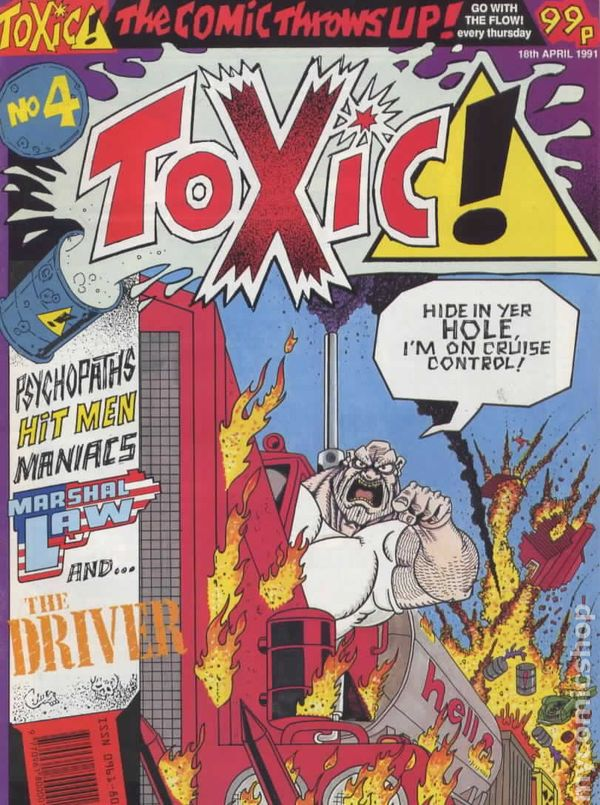
The desire to recapture the renegade innovation and confrontational energy of early 2000AD just didn’t land though. Wagner and Grant lost interest soon, and Mills, always a furnace of ideas, dominated the comic. Pat rolling up his sleeves – “Alright, I’ll bloody do it then”.
It all just whiffed a bit though. Like ‘Finn’ in 2000AD, Mills’ didactic new age sci-fi just seemed duff. Worse, editorial incompetence meant the comic’s scheduling faltered, with strips starting and disappearing at will.
Looking at the comic in hindsight though, it’s a great showcase for new talent, particularly POC creators like the vastly underrated Duke Mighten. There are some brilliant, weird strips fighting for air, like Banx & Leach’s superlative apocalyptic gonzo ‘The Driver’. Mills’ ‘Accident Man’ riffs on American Psycho entertainingly. There are showcases for full colour bizarro art by Martin Emond, John Hicklenton and Dave Kendall.
A weird blister that erupted and popped in a year. Yuk!
ITEM
FFFFFFilth #1: Cover Stories (The Filth, MorrWestErskCo Ltd, 2002-2003)
Since this is a taboo-flaunting turn of the century comic, let’s start by indulging a forbidden pleasure and judging the book by its covers. As executed by Carlos Segura, the covers for The Filth read like parodies of functionality, pharmaceutically clean in the style of Spiritualised’s Ladies and Gentlemen We Are Floating In Space.

Dead stylish, see. Not like the other boys doon yer local comics hut!

Both Spiritualised and MorrWestErskCo Ltd lift the language straight off the brain sweeties box, suggesting the transference of not just an influence but a purpose. This is culture as something to deter you from itching your nethers during an important meeting, or to stop you flicking your lizard tongue at fellow travellers during the long bus rides home.
In contrast, the average page of The Filth looks like the work of seasoned professionals asking why we keep on headbutting the mirror until the laughter stops - art as impromptu surgery rather than medication.
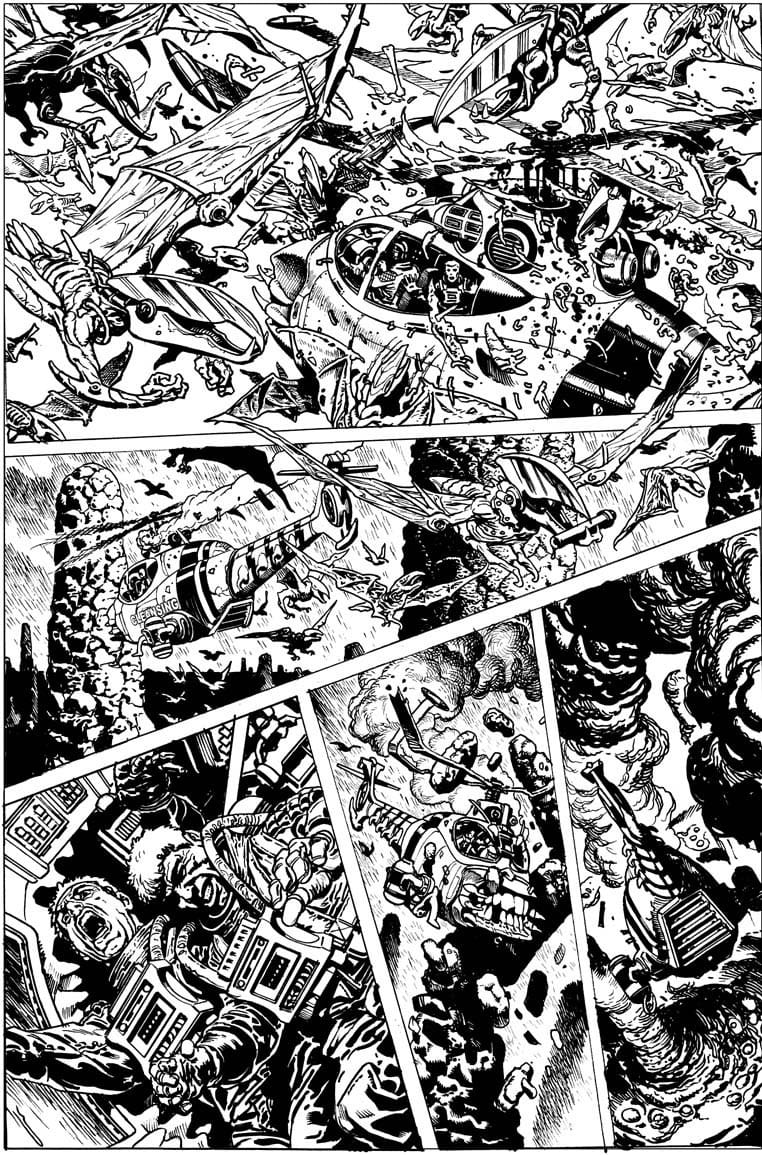
Filth penciller Chris Weston reckons the covers don’t sell the “sordid pleasures” of the material. Via Tom Shapira: “They could have had salacious headlines trumpeting the content of each issue: “US President Raped By Pirates!”, “Flying Semen Rampage!”, “Death By Umbrella!””
This would have harmonised the tone, but - say it like a sadfaced Transformer - at what cost? The contrasting sense of purpose is all about perspectives, eh? The issues themselves depict the pressures of structural forces beyond the grasp of characters and readers alike. The covers look like instructions for understanding (or conducting?) these forces, tasteful pamphlets in the waiting room of the Outer Church.

Put it another way. The first and last covers in the series trace a journey from absurd/heroic opposition to ambiguous assimilation. This story is reflected within, but when judged by the covers, all it amounts to is an adjustment of the existing inventory.

ITEM
A Tale of Two Pumpkins
or
The Pumpkin of Dorian Gray
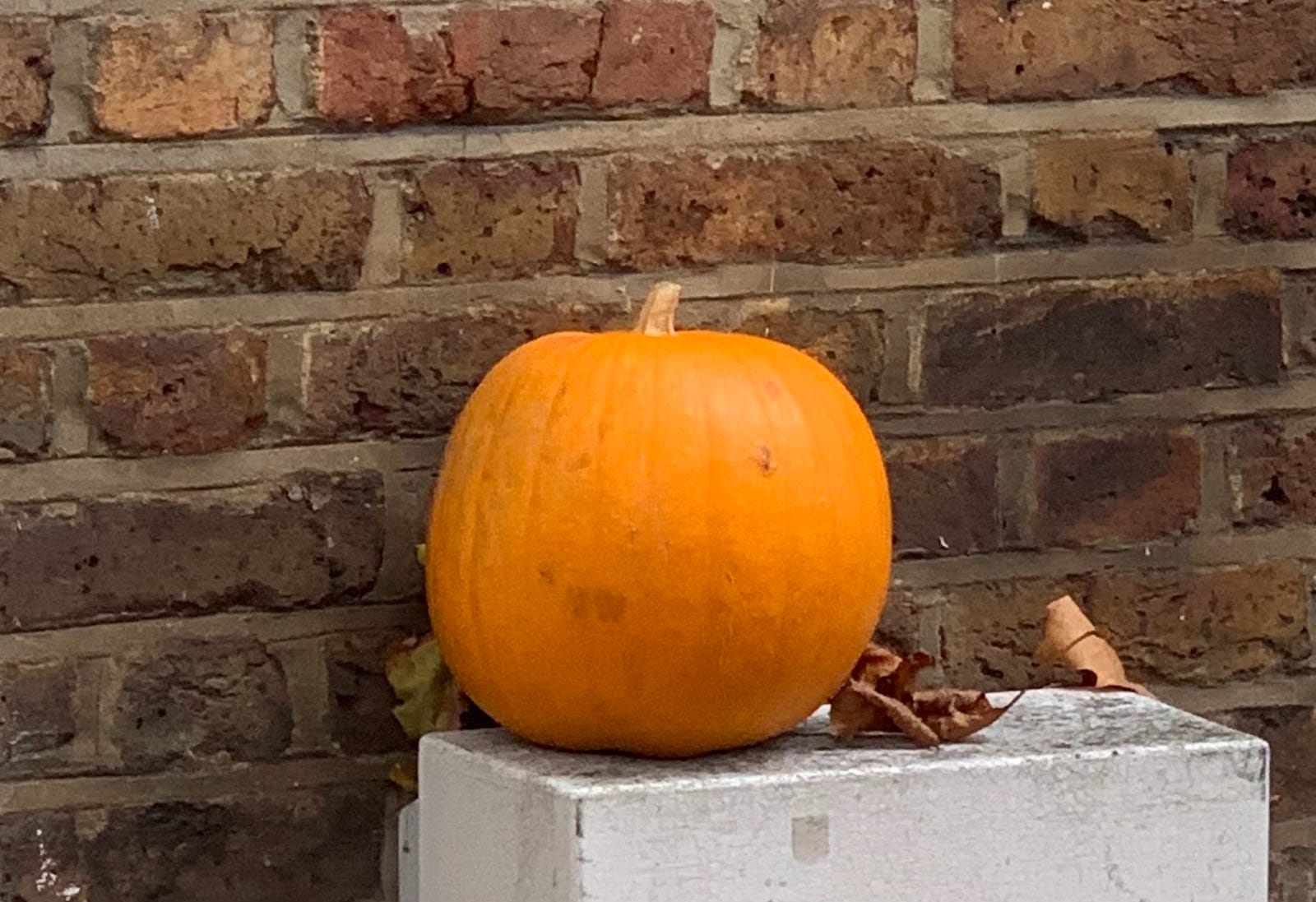
meanwhile in the attic…

ITEM
Mindless Ones at Thought Bubble, B30-31 2000AD Hall
Why do you make comics? Every year you struggle to complete something that has a tiny audience. You've given yourself neck and chest pain and a stress headache that lasted two weeks to spend every spare moment wrapped around your precious iPad. Literally every moment. You were drawing the cover of your stupid fucking comic in a restaurant whilst your son was being difficult and you left this drama to your wife to deal with. She paid for the meal too because you can't, can you? No, you've decided to draw a comic instead of commissions so all the time you're drawing your comic you're losing money. Why? Your day job is shutting down for 10 days this month and you're not going to get paid for those days. It's already a struggle for you to make ends meet and you're drawing a fucking comic that no one asked for? Oh, and you're paying to travel to a convention, stay in a hotel and sit behind a table for two days to face the reality of just how disinterested the vast majority of people are in a comic that will take between 5 and 10 minutes to read and cost your poor victim a fiver. Who in their right mind would choose to do that? You will not cover your costs, nowhere near. You would actually be hundreds of pounds better off if you never drew a single panel. Why are you doing this? It doesn't make sense and it isn't fun. You turn 50 this month, prick!
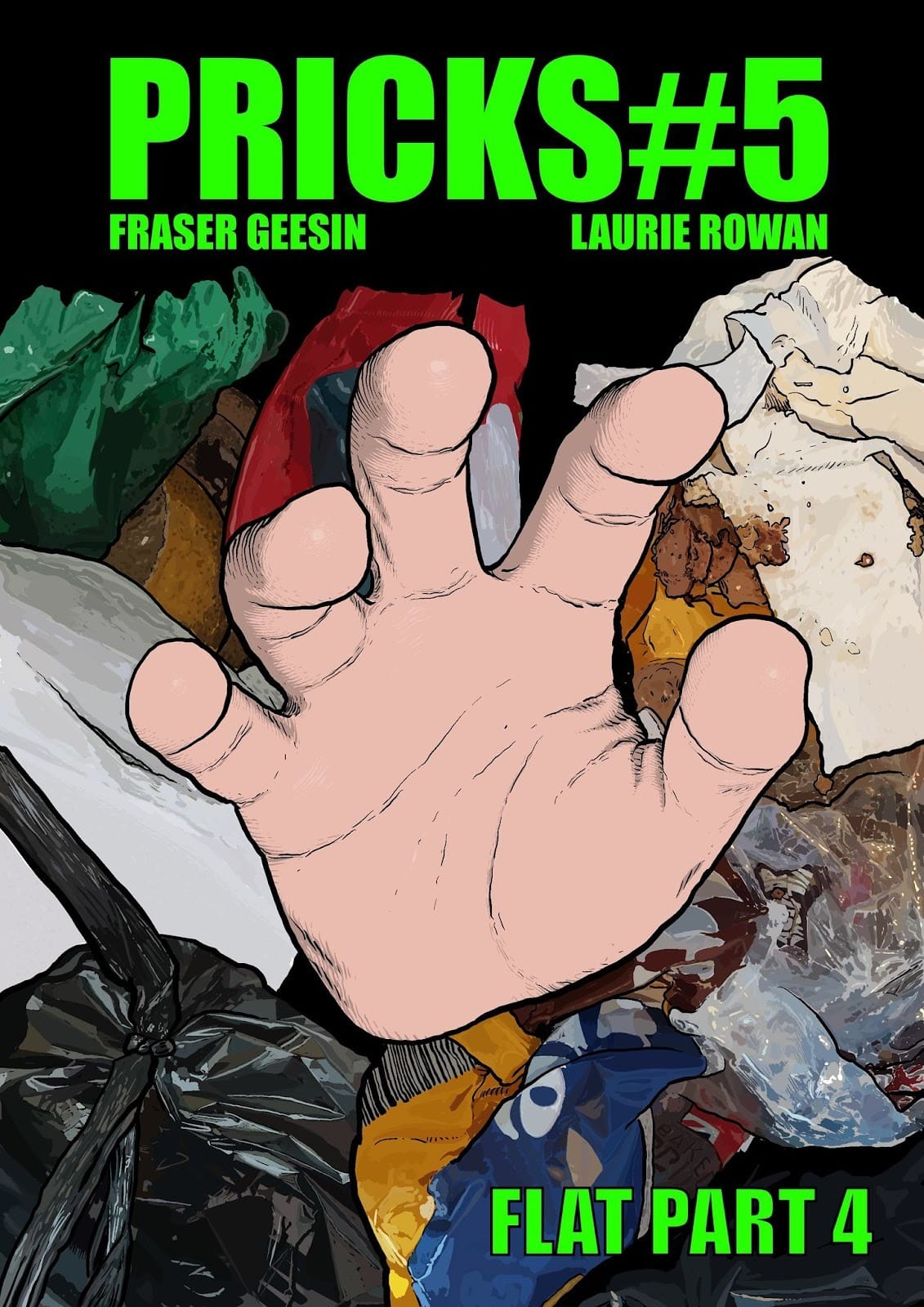
Pricks #5 will debut at Thought Bubble. Come find the Mindless Ones table.
ITEM
Alarum
Tell just one person that you liked this newsletter. Word of mouth, more than any other form of promotion, is how creative works get noticed and sustain themselves. Thank you very much for reading.
ITEM
The Red Dress Project
Conceived by Kirstie Macleod
Curator, Palace Court Theatre Emma Shercliff
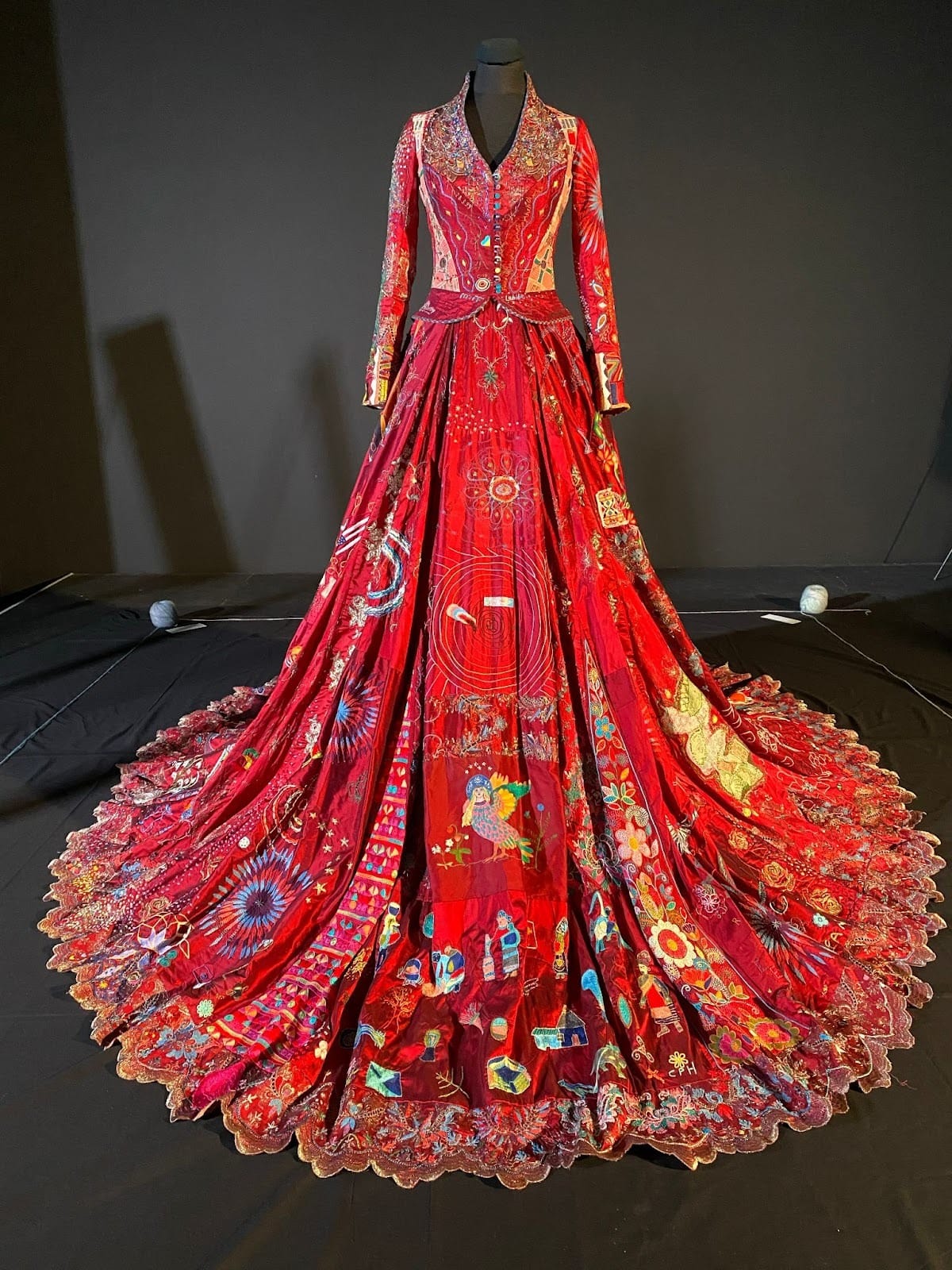
The Red Dress Project is the largest collaborative embroidery project in the world. 367 women, 11 men and 2 non-binary artists from 51 countries. Refugees from Palestine, Syria and Ukraine, women seeking asylum in the UK from Iran, Iraq, China, Nigeria and Namibia, survivors from Kosovo, Bosnia and Herzegovina, Rwanda and DR Congo. Cultures fragmented by war. The dress is a vehicle for sharing of stories. A capsule of knowledge arrested in transition by the loss of individual lives and the dislocation of communities. A document of astonishing technical skill, an embodiment of their culture, eyes that know able to identify a region by the pattern of their stitches. Each patch added to the Dress a contribution to a conversation through materials that transcends language.
Putting this on yards from where bullet-headed men and spit-flecked women regularly gather to shout their legitimate concerns at people trapped in hotel rooms, in a town where a vigilante group containing convicted domestic abusers prowls the streets to ‘keep our women safe’, in a country where our leaders shore up their status by performative cruelty feels like… something.
Kirstie tells us about a group from Kigali, Rwanda. Six women who have all lived through a genocide and lost friends, family, children. This project was the first time they sewed together. The intermediary is worried that the work isn’t right for the Red Dress, it doesn’t show off their technical prowess but the women are insistent that this is the piece they want to contribute. The patch arrives. Deliberately crude. Deceptively simple. A stick figure, one of the most basic figurative representations of a human being we have, tightly bound in a claustrophobic black spiral but as the threads move out they shift into colour and space and become a sun radiating out light. A document of their journey. A map for others.
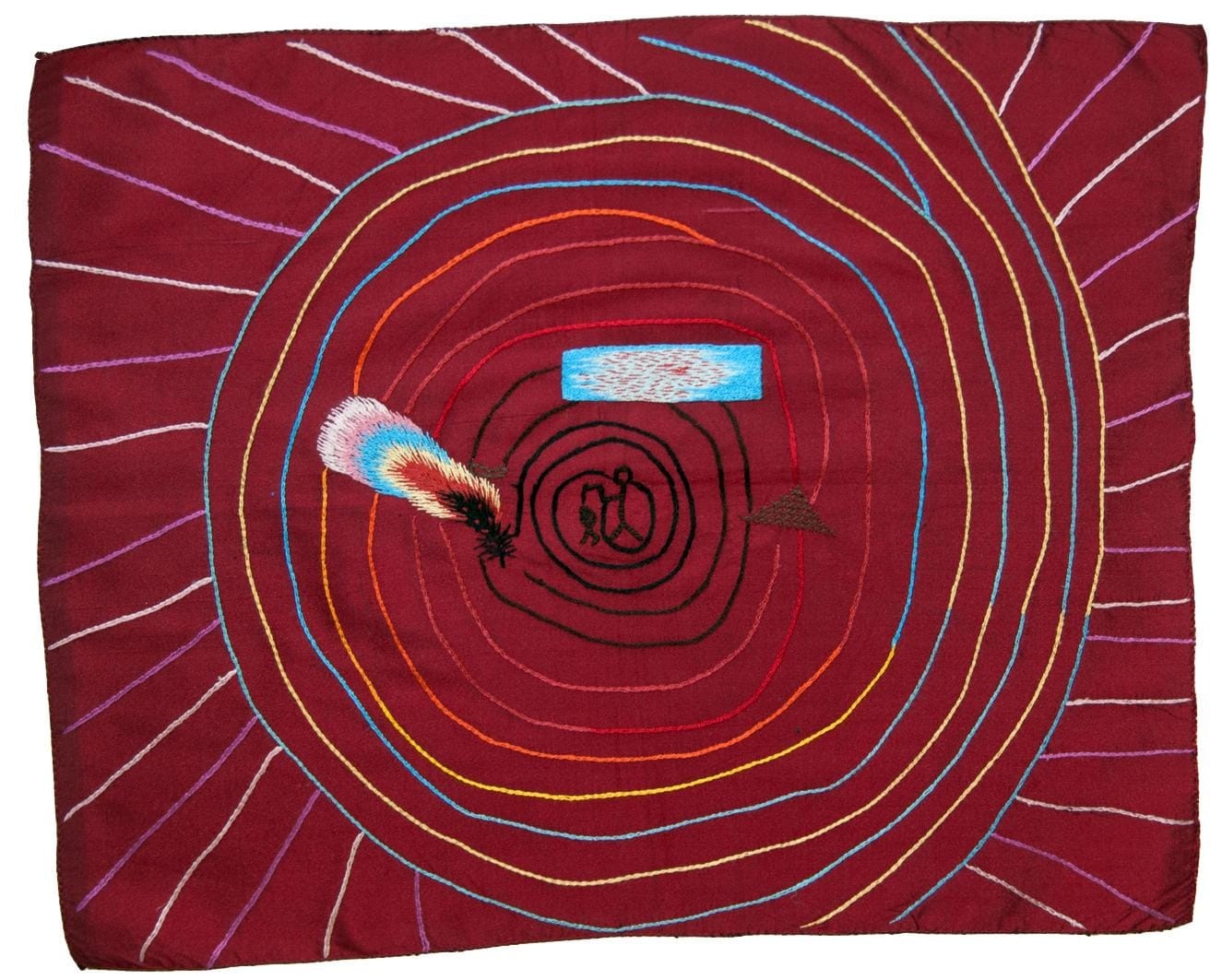
ITEM
TIME FOR SOME FREE-ASSOCIATING ABOUT UNICORNS

A quick advisory note: it is acceptable and you can babysit only if you learned Q is in the pony cartoon/there is a zebra one/an alicorn is a cross with a Pegasus because you have a child of your own. I don’t make the rules but there they are!
The unicorn is the national animal of Scotland, appropriately because it doesn’t exist but if it did wouldn’t it be really good, you feel it ought to don’t you readers? Eh?!
THE THING OUTWITH THE THING
I have semi-reluctantly come back to being a separatist ScotNat for the same driving reason I embraced the principle when Ed Miliband was busy unveiling a plinth saying he would be horrible to refugees. Scottish nationalists have again extended bare minimum human decency to immigrants in contrast to all their peers bar the Greens and, whilst having nationality and passing, I was born far away from here.
English nationalism has gone absolutely septic and it was bad enough before, so being mean about them at least still feels a bit like “punching up”. This is not an implacable stance and I would happily have issued the mea culpa of a lifetime if Corbyn had been elected in 2017, as he very nearly was, something people seem very keen to airbrush from memory.
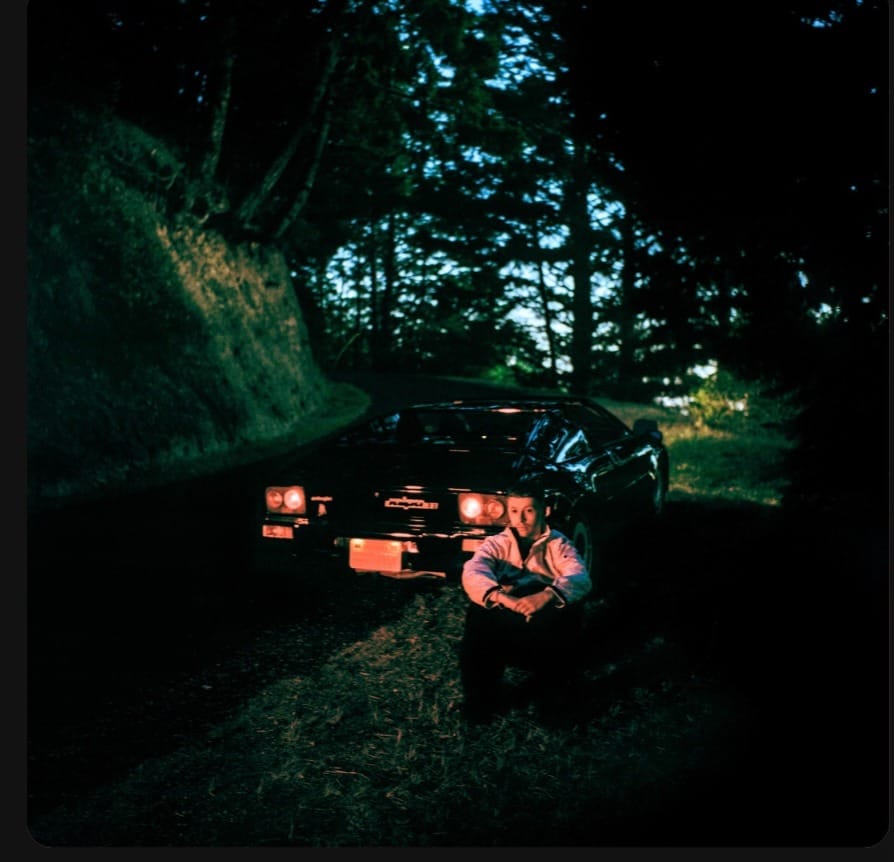
Black motor on the cover is winning
Anyway, Scotland — Miguel is no longer my favourite pop star/Sam Gellaitry is my new favourite pop star jpeg; a wee guy fae Stirling has released the best pop album in years, the Paul Jon Milnesque entitled ANYWHERE HERE IS PERFECT - you can tell from the opening Prince 1999 vintage keyboard stabs leading to Daft Punk squelch and Autre ne Veit invention on LIGHTNING; hard to know which of his peers he is most like, probably Caroline Polachek for the interest in ambient textures married with an accidental perfect songwriting gift - SCAR/A NEW VOID rivals Kim Petras for melodrama - you know it’s going off when every second track feels like falling in love and one one might happily declare “best song ever”, The Blue Nile, Candi Staton and them be damned. Scotland really shouldn’t have the best pop star, comics writer and Gladiator ever but it does, to my continuing surprise, ‘cos it is the Unicorn Factory.
THE IMPOSSIBLE IS INEVITABLE
ITEM
Culloden (Peter Watkins, 1964)
The War Game (Peter Watkins, 1966)
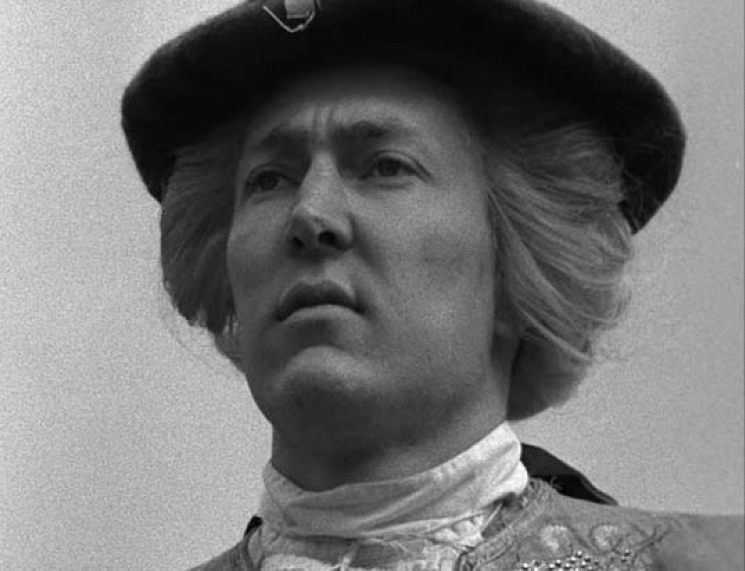
Gunpowder night's purpose was a clash of noise and light to dispel the lingering dead we invited last week to share the mist with us a while. An ending, not a midpoint. Today it bridges All Hallows with the warrior cult’s annual demand for florid genuflection, so the fifth becomes a hail of fire and cannon-fire to tell the war dead they are not off-duty til a few more days yet.
To lose this week the finest maker of British martial arts movies feels of a piece with this recent ritual adjustment, and with other news: Ajax mini tanks heading for the steppes for target practice, playing the target. The big order for F35A tactical atomic capacity, new toys which remove the comfortable paradoxes of mutually assured destruction. In this century’s nuclear wars, you don’t even get the blessed release of certain three-minute death - because the desert craves survivors, witnesses, and shambling morlocks to charge rent to.
Watkins used the alien abstractions of form to illustrate the automatic forces that continually feed humans into the disaster zone. Pushing techniques of newsreel and documentary onto historic and hypothetical fields of war, the camera’s eye and narrator’s interrogation freeze the everyday subjects of history in incongruities of reflex action. Tribal obligations to monstrous assemblies where the collective voice is silenced and outsourced to a pitiless, bodiless body. There is a momentum to events that comes from a place we can’t point a camera at, and it generates a gravity that engulfs our ability to imagine future, past or potential.
But, just as Watkins’ eye was considered enough to show the scars war leaves on the aggressor as well as its victims, his cold humanism took care not to absolve the individual. The loathing directed at Bonnie Prince Charlie, played to petulant perfection by Olivier Espitalier-Noel, holds the audience’s gaze and demands accountability for your choices.
